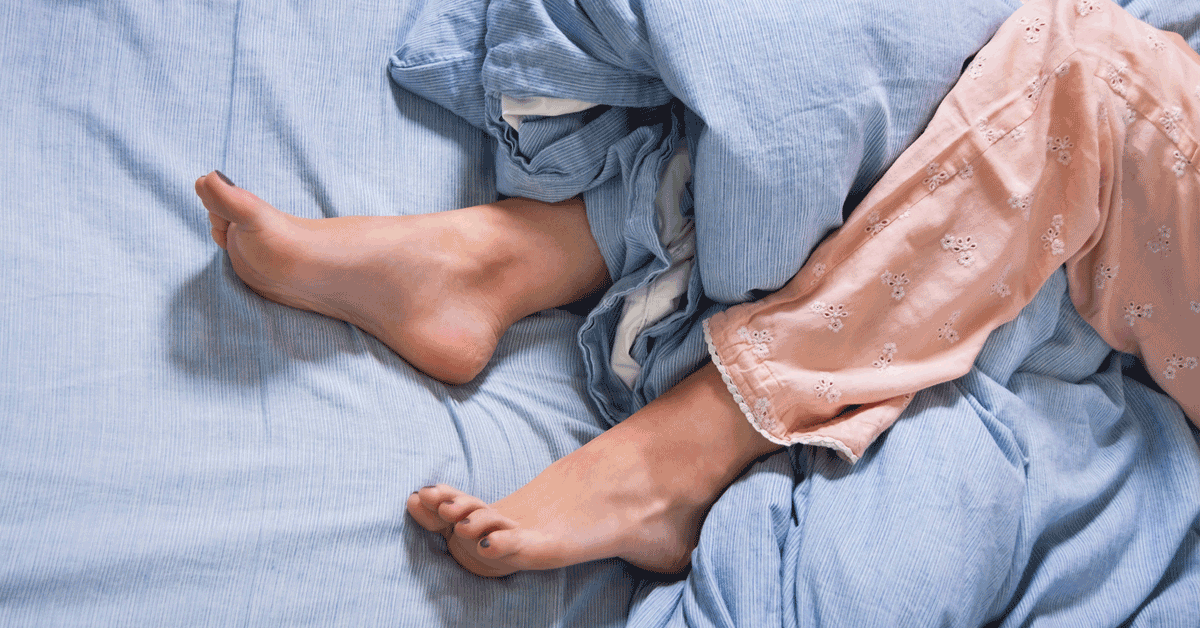What is Restless Legs Syndrome?
Restless Legs Syndrome (RLS) is a neurological disorder characterized by an extremely uncomfortable feeling such as creeping, throbbing, pulling, itching or needles and pins in the legs, typically in the evenings while sitting or lying down. It makes the patient feel like getting up and moving around which reliefs the unpleasant feeling temporarily. Restless Legs Syndrome mostly affects the legs, but can also affect the arms, torso, head, and even phantom limbs. It can disrupt sleep and thus leading to daytime drowsiness.
RLS symptoms often begin at the age of 40 years but up to one-third of patients develop symptoms before the age of 20 years. RLS affects estimated 7 to 10 % of the young to middle aged people and 10 to 20 % in those older than 60 years. In the Middle East region approximately 3% of the general population is affected. It is twice as often in women as in men. Especially pregnant women suffer from RLS. 25% of pregnant women develop the disorder in the last three month of pregnancy.
Symptoms
Restless Legs Syndrome symptoms are most commonly located in the deep of the calves, in the feet and thighs. Initially the patient often get an exaggerated sense of positional awareness of the affected leg, later the sensations appear or intensify even while sitting. Movement of the affected part of the body, for instance walking around brings an immediate relief, although temporary and partial and the sensations immediately return after the movement stops. These symptoms often lead to a severe sleep deficiency with secondary tiredness and loss of concentration in job or while driving a car. Some people with severe RLS are not even able to go to work.
Causes
One distinguishes between two kinds of Restless legs Syndrome: the primary and the secondary RLS.
The primary (idiopathic) RLS is a neurological disease with unknown causes. A disturbance of a neurotransmitter system in the brain is suspected. Medication which interferes with the neurotransmitter system helps reliably.
The secondary (symptomatic) RLS is most commonly associated with iron deficiency, venous disorders, polyneuropathy, folacit deficit, Diabetes, renal diseases or pregnancy.
Restless Legs Syndrome can also be induced by antiemetic, anti-depressive and anti-psychotic drugs. A primary RLS should not be considered until possible medical conditions are ruled out, especially venous disorders and polyneuropathy.
Risk Factors
1. AGE. The syndrome affects 10 percent of people 65 and older, compared with only 5 percent of the general population.
2. SEX. Women are more likely to experience the condition than men, but the sex connection seems to be tied to pregnancy. If a woman has never been pregnant, her risk is the same as a man’s.
3. LOW IRON. Diminished iron in the brain is implicated in the syndrome.
4. FAMILY HISTORY. People with a family history of the disease are at greater risk.
More than just a discomfort
Harvard researchers found out that sleep deprivation – caused by Restless Legs Syndrome (RLS) – leads to higher risk of early death. Former studies linked RLS with many other conditions, including depression, high blood pressure, and heart disease. This shows that RLS is not just a discomfort or a condition causing sleep problems. It has severe effects on overall health and longevity.
Treatment
The goal of a treatment of Restless Legs Syndrome is to reduce the uncomfortable sensations. Sometimes it is necessary to treat underlying conditions such as iron deficiency or peripheral neuropathy.
With Medication
To reduce the restlessness in the legs there are several medications available such as medications for Parkinson’s disease which reduce the amount of motion in the legs by affecting the level of the neurotransmitter in the brain. Moreover, medications for Epilepsy may help reduce the uncomfortable feeling, as well as muscle relaxants and sleep medications. But these medications don’t eliminate the leg sensations, and they may cause daytime drowsiness.
Without Medication
Iron place a big role in Restless Legs Syndrome. Iron levels should be measured and a deficiency should be balanced. Furthermore, a non-medical therapy includes the avoidance of caffeine, alcohol, nicotine, and medications that exacerbate Restless Legs Syndrome, physical activity and good sleep hygiene. Simple lifestyle changes often play an important role in alleviating symptoms of RLS and to learn some relaxation techniques such as yoga and meditation can lead to a significant improvement.


